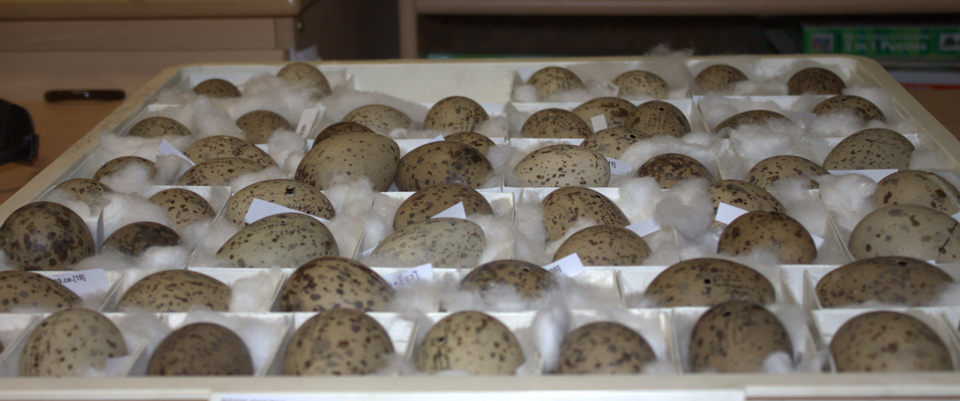Use of seabird eggs as sentinels of the marine environment
Egg formation is an energetically and nutritionally demanding process. Therefore, the size and colour of the egg may reflect both the availability of critical resources in the environment and/or the physiological condition of the female. Thus egg measurements can provide a useful tool to look at changes in a population’s environment. Given that eggs had been collected for over a hundred years and been deposited in museums with meticulously recorded location and collection year, this resource gives a unique opportunity to look at conditions populations might have encountered over a period of 100-150 years. Here we were able to compare trends in egg size changes in 3 species breeding in the Faeroes (great skua, northern fulmar and common guillemot) and moreover compare the trends for Faeroese great skuas with those from other regions of the Northern Atlantic.
Great skuas are top predators and therefore effectively sample the environment in which they forage. Among others they will also pick up persistent organic pollutants that are deposited in their eggs as well marine plastic that can be found in their pellets. The study showed that Faeroese great skuas may now consume less persistent organic pollutants than 40 years ago, but they are consuming a lot of marine plastic debris.

Researchers
Outputs
Hammer, S., Nager, R.G., Alonso, S. McGill, R.A.R., Furness, R.W., Dam, M. 2016 Legacy Pollutants are Declining in Great Skuas (Stercorarius skua) but Remain Higher in Faroe Islands than in Scotland. Bull Environ Contam Toxicol 97: 184–190 DOI 10.1007/s00128-016-1856-x
Hammer, S., Nager, R.G., Johnson, P.C.D., Furness, R.W., Provencher, J.F. 2016 Plastic debris in great skua (Stercorarius skua) pellets corresponds to seabird prey species. Marine Pollution Bulletin 103: 206-210. DOI 10.1016/j.marpolbul.2015.12.018
Funding
The project received funding from STATOIL and the Faeroese Research Council

